 What makes people volunteer? This question often runs across the minds of nonprofit organizations when trying to recruit volunteers for service projects. It is important to understand these motivating factors to recruit more dedicated volunteers to your cause. When individuals have a strong tie to your organization, they are more likely to return for service again. They feel that their needs and feelings are being respected when they are included in project planning.
What makes people volunteer? This question often runs across the minds of nonprofit organizations when trying to recruit volunteers for service projects. It is important to understand these motivating factors to recruit more dedicated volunteers to your cause. When individuals have a strong tie to your organization, they are more likely to return for service again. They feel that their needs and feelings are being respected when they are included in project planning.
How can you better serve your volunteers? Check the top six factors that make individuals volunteer for your organization.
- Social: Individuals are often motivated by social factors when choosing whether or not they should volunteer. Social factors include statements such as “My friends volunteer” or “People I know share an interest in community service.” These individuals tend to choose organizations they have heard about through word of mouth. Word of mouth is one of your best recruitment strategies. Provide great service experiences so that volunteers want to talk about it and get their friends involved in your cause.
- Value: Other individuals are motivated by their core values when choosing their ideal service projects. Value reasons include, “I am concerned about those less fortunate than myself” or “I feel it is important to help others.” It is important to reinforce your organization’s core values in its recruitment message to attract this type of volunteer.
-
Career: Volunteers can also be motivated by their career paths and goals. Volunteer work is a great way for people who are looking to expand their professional network to find new connections. It is also a great outlet to gain new skills or utilize skills they may not have used
 otherwise. This type of reasoning includes “I can make new contacts that might help my business or career “or “Volunteer work will look good on my resume.” It is important for your organization to include the personal benefits to volunteering, as well as the overall community benefits from volunteer work.
otherwise. This type of reasoning includes “I can make new contacts that might help my business or career “or “Volunteer work will look good on my resume.” It is important for your organization to include the personal benefits to volunteering, as well as the overall community benefits from volunteer work.
- Understanding: Volunteering to gain a better understanding of the community and its needs is essential some individuals. These individuals may ask your organization “What can I learn more about the cause for which I am working?” Volunteering allows individuals to gain a new perspective and understanding of their community and its members. It opens new doors for new information that can be used to better serve the community.
- Protective: Volunteer work is a great stress reliever. It makes us feel better about ourselves and our current situation when we actively help our community. These factors should be highlighted, when recruiting volunteers, as well. This reasoning includes “Volunteering is a good escape from my troubles” or “By volunteering I feel less lonely.” Volunteering forces you to step out of your comfort zone and find new meaning and perspective.
- Esteem: When we help others through volunteering it makes us feel that we serve a purpose and we are an important part of the community. Highlight this aspect in your recruitment message. Let your volunteers know that they are making a huge difference in the overall health of the community in which they are serving. If possible, cite results from the actual project to let volunteers know the magnitude of their service.
Which one of these factors applies to you? We would love to hear your comments and suggestions in the section below!

 Hosting intergenerational projects within your volunteer organization is essential to including the entire community. Often, it can be difficult for organizations to understand older volunteers. It is important to understand older adults and what issues they care about to ensure their participation in your project.
Hosting intergenerational projects within your volunteer organization is essential to including the entire community. Often, it can be difficult for organizations to understand older volunteers. It is important to understand older adults and what issues they care about to ensure their participation in your project. What can your program sell to older Americans?
What can your program sell to older Americans?

 limited to identifying the current quality and quantity of service by episodic volunteer in the last three to five years and surveys identifying areas in which episodic volunteers may be helpful.
limited to identifying the current quality and quantity of service by episodic volunteer in the last three to five years and surveys identifying areas in which episodic volunteers may be helpful. contact is the third recruiting technique. The fourth method of volunteer recruitment is the mass appeal. This includes such things as flyers, print and media ads, billboards, brochures, window displays, or want ads.
contact is the third recruiting technique. The fourth method of volunteer recruitment is the mass appeal. This includes such things as flyers, print and media ads, billboards, brochures, window displays, or want ads.![06.22.10.Group shot[small]](/wp-content/uploads/2010/06/06.22.10.Group-shotsmall-300x190.jpg) The idea of planning a volunteer project can be daunting! With all of the step involved, be sure to take time to visit the potential project site to determine the greatest needs. Whether you are working at a shelter, a park or a community service organization, a site visit will help you identify potential projects and ensure your project runs smoothly.
The idea of planning a volunteer project can be daunting! With all of the step involved, be sure to take time to visit the potential project site to determine the greatest needs. Whether you are working at a shelter, a park or a community service organization, a site visit will help you identify potential projects and ensure your project runs smoothly. Imagine that you are driving down the road with your dog in the back, minding your own business when you find yourself being followed by a woman who parks when you park, then jumps out of her car, races to your side and starts talking about the difference you can make by contributing to the local animal shelter.
Imagine that you are driving down the road with your dog in the back, minding your own business when you find yourself being followed by a woman who parks when you park, then jumps out of her car, races to your side and starts talking about the difference you can make by contributing to the local animal shelter.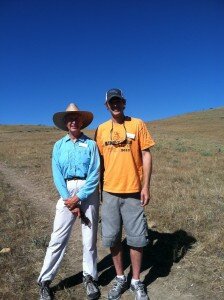 of the Bighorn Mountains. I visited my friends Michelle Sullivan and Brian Kuhl, who, along with other residents, have made a thoughtful choice to plant roots in Sheridan and raise their families. I guess you don’t end up here by accident.
of the Bighorn Mountains. I visited my friends Michelle Sullivan and Brian Kuhl, who, along with other residents, have made a thoughtful choice to plant roots in Sheridan and raise their families. I guess you don’t end up here by accident. I was fully attired on a recent Saturday morning, when I joined 150 volunteers in my first-ever Human Cattle Drive (alternatively called the Trail Trudge, Tromp or Trollop) to help break in a gorgeous new 12-mile trail created by the Sheridan Land Trust with help from cooperative private land owners. Families and neighbors alternatively tromped and visited with friends as they tamped down the path that the community will enjoy for decades to come.
I was fully attired on a recent Saturday morning, when I joined 150 volunteers in my first-ever Human Cattle Drive (alternatively called the Trail Trudge, Tromp or Trollop) to help break in a gorgeous new 12-mile trail created by the Sheridan Land Trust with help from cooperative private land owners. Families and neighbors alternatively tromped and visited with friends as they tamped down the path that the community will enjoy for decades to come.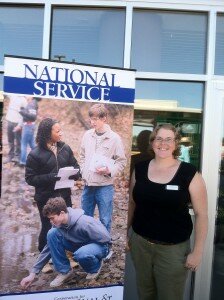 ity for elders that’s breaking the mold. The Green House Living movement, a care model for elders that throws out much of the institutional culture of nursing homes and embraces a home-like environment, inspired two local volunteers to get moving.
ity for elders that’s breaking the mold. The Green House Living movement, a care model for elders that throws out much of the institutional culture of nursing homes and embraces a home-like environment, inspired two local volunteers to get moving. no, but they had no way of saying yes – they had no additional capacity. And then a local plumber, who had seen a flier about the program (posted by Arin’s hairdresser), stepped forward. He organized a group of plumbers, welders and workmen, who took care of the entire cost. Within a year, The Food Group was sending nourishing meals home with 248 children each week.
no, but they had no way of saying yes – they had no additional capacity. And then a local plumber, who had seen a flier about the program (posted by Arin’s hairdresser), stepped forward. He organized a group of plumbers, welders and workmen, who took care of the entire cost. Within a year, The Food Group was sending nourishing meals home with 248 children each week. Employee volunteer programs are a great way to not only benefit your community, but also your workplace environment and employees. It is easy to begin one of these programs within your office environment. By serving your community as an organization, the community will get to know your business and their employees. Establishing a personal connection with the community will improve the overall attitude that your community has toward your business.
Employee volunteer programs are a great way to not only benefit your community, but also your workplace environment and employees. It is easy to begin one of these programs within your office environment. By serving your community as an organization, the community will get to know your business and their employees. Establishing a personal connection with the community will improve the overall attitude that your community has toward your business. and the people with which it operates.
and the people with which it operates.
 they feel the issues they care about are also important to their company.
they feel the issues they care about are also important to their company.
 Welcome to the first week of school, for the most of us! Yikes! What do you do now that the kids are in school and you have way more free time!
Welcome to the first week of school, for the most of us! Yikes! What do you do now that the kids are in school and you have way more free time! or booster meeting. Vote on a local nonprofit to raise donations for at the next sporting event. After the vote, decide on the appropriate roles for the event including who will make the baked goods and who will donate the profits from the sale.
or booster meeting. Vote on a local nonprofit to raise donations for at the next sporting event. After the vote, decide on the appropriate roles for the event including who will make the baked goods and who will donate the profits from the sale.
 It can be hard to say good bye to your children once they leave for their first day of school. When your volunteer your time for your community, the time away from your children will feel more bearable. Enjoy your alone time and learn more about your community and yourself through volunteering!
It can be hard to say good bye to your children once they leave for their first day of school. When your volunteer your time for your community, the time away from your children will feel more bearable. Enjoy your alone time and learn more about your community and yourself through volunteering!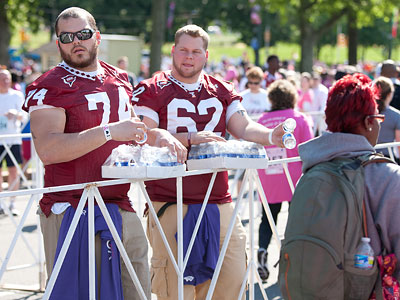
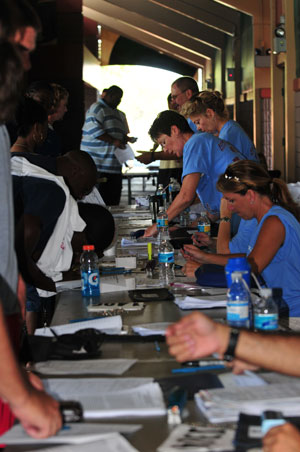 Host your own football draft: While you and your community is in the midst of all this competition make a pact to serve others year round. With all the fun you are going to have it will not be hard to recruit people! You can make this happen through making a donation calendar, assigning a bin to be stored in a local area for donations, writing up a schedule to define who will take donations to the food bank each month, etc. Just remember communication is key to any successful team!
Host your own football draft: While you and your community is in the midst of all this competition make a pact to serve others year round. With all the fun you are going to have it will not be hard to recruit people! You can make this happen through making a donation calendar, assigning a bin to be stored in a local area for donations, writing up a schedule to define who will take donations to the food bank each month, etc. Just remember communication is key to any successful team!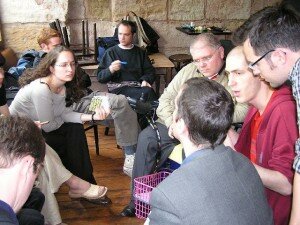 How do you communicate the value of a service event by connecting it with the bigger picture? Reflection helps you see how your service – and the service of other volunteers working with you – has benefited the community. Through reflection, you can think about your commitment, the work you did, how it affected you, the impact it made on the community, and future actions you can take to continue to change your world.
How do you communicate the value of a service event by connecting it with the bigger picture? Reflection helps you see how your service – and the service of other volunteers working with you – has benefited the community. Through reflection, you can think about your commitment, the work you did, how it affected you, the impact it made on the community, and future actions you can take to continue to change your world. Family & Women’s Services
Family & Women’s Services
 A lot of stuff went into getting Curiosity off of the ground (and away from cats). It wasn’t all electronics and rocket fuel, either. A lot of hours and probably some late-night takeout went into making Curiosity successful.
A lot of stuff went into getting Curiosity off of the ground (and away from cats). It wasn’t all electronics and rocket fuel, either. A lot of hours and probably some late-night takeout went into making Curiosity successful. There are a lot of people at NASA’s
There are a lot of people at NASA’s  You can’t tell us you don’t think this guy thinks his job is awesome and has fun at work.
You can’t tell us you don’t think this guy thinks his job is awesome and has fun at work.
